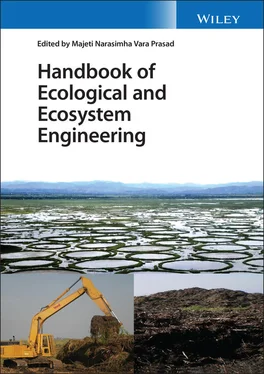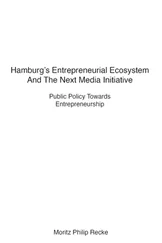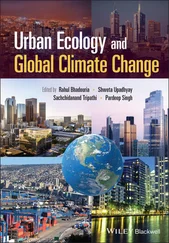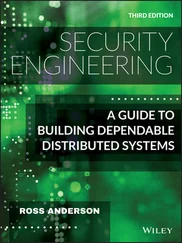Xiao and Xiao [63] mathematically identified potential areas and hotspots/coldspots based on the amount of change in ecosystem services (i.e. provisioning, regulating, cultural and supporting services to human obtained from aquatic ecosystems, forest ecosystems, grassland ecosystems and agro ecosystems), assuming 100% conversion of all non‐forest land into forest. The ecological engineers, planners, and managers establish a monitoring program that objectifies decisions, ensures target fulfillment, and addresses social needs. For any restoration project to be successful, there are three primary stages of an effective adaptive management plan: (i) a clear vision and goal statement, (ii) a conceptualized design or model, and (iii) a definite framework [55]. The target or goal statement is a means to evaluate the system's practical applicability that can be assessed with the project's performance criteria. A properly designed model helps in devising a target‐oriented project based on ecological science. A project framework is based on a system‐development matrix by incorporating the knowledge gained through the previous two ingredients required for a project. During the process of implementing ecological engineering models and then developing and restoring a particular region, plausible outcomes must be foreseen and required measures undertaken to correct problems.
The term restoration is defined as any process that focuses on returning a system to its original, pre‐existing situation. The Society for Ecological Restoration has defined ecological restoration as “the process of assisting the recovery of an ecosystem that has been degraded, damaged, or destroyed” [48]. The aim of ecological restoration is to replicate structures with reference to natural ecosystems as a basic model, maintaining biodiversity, functionality, and other parameters. Ecological engineering involves creating and then restoring sustainable ecosystems, thus benefiting both humans and Nature. Some of the major areas that require the attention of ecological engineering projects for development and restoration are discussed next.
3.4.1 Coastal Ecosystem Restoration
Protection and preservation of coastal regions were traditionally meant to safeguard against flooding. However, incomplete knowledge about the state of the system with this traditional approach often impacted the local ecology negatively and caused unpredicted outcomes that eventually affected the ecosystem more significantly. Incorporating ecological services into coastal ecosystem protection and restoration, due to the need for novel, cost‐effective, sustainable designs for solving problems like rising sea levels due to climate change and minimizing the anthropogenic impacts on these ecosystems, has attracted the attention of many researchers [13].
To fulfill the objectives of coastal ecology restoration, the methods used should be selected based on the paradigm of a few species (such as mussel beds, oyster beds, and vegetation) that can participate in the enhancements with their ability to modify/save the physical structure of the environment; the construction of dams or dikes also enhances ecosystem' biodiversity. In addition, the unique ability of these species to trap and stabilize sediments in intertidal areas leads to soil elevation and attenuation of tides; they are also suitable for construction of low‐cost, sustainable dams. For example, marram grass ( Ammophilaarenaria ) can trap sand, hence building protective sand dunes that invigorate dikes in sandy coastal regions. Dams or dikes constructed with reef‐forming shellfish species, coral reefs, wetlands, or mangrove forests are self‐sustaining and require low maintenance, minimum reinforcement, and less financial assistance.
Complex engineering designs often find it impossible to incorporate ecosystem engineering species into a system's local demographic conditions. In such cases, traditional designs can be revised to enhance inhabitability by simply modifying ecological structures with better ecological values for coastal protection purposes. This may not result in a cost‐effective approach, but mitigation of engineering impacts on ecology is definitely realized with acceptance from the local community.
The primary goal of coastal protection is to protect the land from seasonal floods and erosion of shorelines. An occasional or annual flood threatens a large geographic scale with mostly temporary damage, while the erosion of shorelines is very site‐specific and has a greater impact on the entire coastline [61]. Groyns and revetments are traditional protective measures that minimize the threats of shoreline erosion; dams are constructed to prevent floods and protect the mainland on a larger scale, whereas breakwaters are effective against both floods and erosion on a smaller scale. A comprehensive and integrated assessment and evaluation of the coastal ecosystem for management, maintenance, stabilization, and protection has become the primary focus of recent researchers seeking to develop innovative methodologies [51]. Weight of evidence (WOE) [1], ecological risk assessment (ERA) [9], and the ecosystem services approach (ESA) [57] are among several well‐designed assessment models that emphasize pollution rather than the validation of ecosystem integrity; a few integrative approaches primarily focus on the assessment of ecosystem health. Nevertheless, an integrated ecosystem health assessment approach (IEHA) in combination with ecological indexes results in better evaluation of community structures at a macro level as well as biodiversity measures of ecological systems [14, 29].
According to a report by Brown and McLachlan [7], more than 80% of sedimentary shorelines are lost due to construction of artificial structures in coastal areas. With the replacement of coastal marshes by brick walls, benthos are immensely effected on either side of the wall [47], although the exact cause for the adverse effects on adjacent habitats is difficult to pinpoint. As an example, natural rocky shores of Sydney Harbor are affected by the disintegration of the shore due to the infrastructure of intertidal seawalls and urbanization [20]. A case study by Burt and Bartholomew [8]discussed coastal development and modification in the Arabian Gulf by encouraging colonization of fish and corals to enhance ecological benefits, integrity, and sustainability of modern urban development. Similarly, a case study in the Jiangsu coastal area of China based on a dimensionless polygon area method reflected the structure, health, and function of an ecosystem that greatly depends on temporal 5 and spatial 6 changes. The results of this assessment may be applicable for policy makers as a reference for the planning and development of coastal areas [52].
3.4.2 Mangrove Restoration
Mangrove forests are integral parts of coastal ecosystems of ecological importance; 69 species of plants are referred to as mangroves. Mangroves cover 146 530 km of the world's tropical shorelines [16]. Reports witnessed a significant decline in the area of mangroves from 198 000 km in 1980 to 157 630 km in 1990, and it continues to decrease at a noticeable rate [16]. This loss is taking place primarily in countries like the Philippines, Thailand, Vietnam, Malaysia, and the US (Florida and Puerto Rico)[24]. A large re forestation program for the restoration of anthropogenic degradation caused to mangrove forests by planting Sonneratia Apetala species over an area of 1600 km 2on the accreted muddy shores of Bangladesh was successfully implemented with the aim of providing sufficiently raised land for accretion of sediments to support agriculture and vegetation. It has been estimated that about 800 km 2of land has been recovered as a result of these plantings after a loss of almost 50% caused by cyclones and insect outbreaks [4]. However, several similar attempts have failed to restore the mangroves in other countries. Nevertheless, a thorough study of the habitants and meticulous projection of ecological engineering projects will lead to successful restoration of mangroves, ensuring the coexistence of modern civilization with Nature.
Читать дальше












